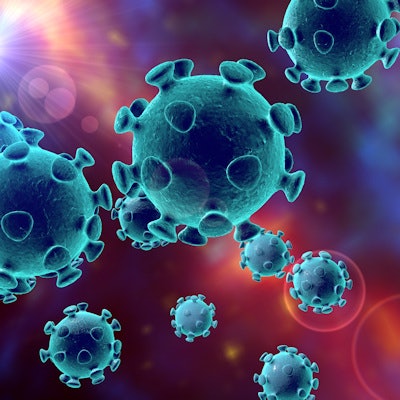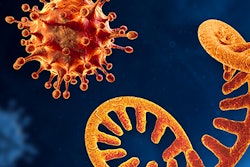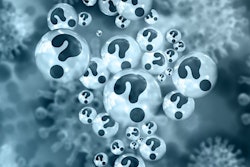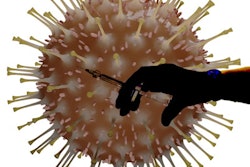
Drilling at lower rotation speeds and eliminating the use of dental drills that use both air and water could significantly reduce the spray of aerosols, which may contain SARS-CoV-2, according to a study published on December 16 in the Journal of Dental Research.
Knowing how to reduce the aerosols generated from dental tools may help dentists better protect patients from exposure to SARS-CoV-2.
"Multiple mechanisms for atomization of fluids from rotary instrumentation exist, but parameters can be controlled to modify key spray characteristics during the current crisis," wrote the authors, led by Antonis Sergis, PhD, of the department of mechanical engineering at Imperial College London.
Dental procedures may pose a high risk of viral transmission from SARS-CoV-2 due to the aerosols produced by certain tools, such as ultrasonic scalers and drills. Dentists and hygienists were encouraged to stop using aerosol-generating tools during the pandemic to help prevent the spread of COVID-19. After studying the spray emissions from these dental instruments, the researchers concluded that changing drill parameters can prevent exposure and improve safety for both patients and dental teams.
Dental clinic rooms at Guy's Hospital in London were used to test how aerosols are generated during procedures like decay removal, applying and polishing fillings, and adjusting prostheses. High-speed cameras and monochromatic laser light-sheet illumination were used to measure aerosol generation, and the findings were used to suggest dental instrument use parameters, according to the authors.
Air turbine drills generate thick clouds of droplets that spread as fast as 12 m/sec and can quickly contaminate an entire clinic room, they noted. As little as a milliliter of saliva from a patient infected with SARS-CoV-2 contains up to 120 million copies of the virus.
The researchers also tested a high-torque electric micromotor drill with and without the use of water and air streams. When it was used at low speeds -- less than 100,000 revolutions per minute (rpm) -- without air streams, it generated 60 times fewer droplets than those produced by air turbine drills.
Though the authors didn't cite any specific study limitations, they noted that mixing a coolant with real saliva should be considered. Stimulation method, physiological conditions, time, and differences in individuals can alter saliva. When saliva is diluted significantly with excess cooling water, it is expected to result in a mixture that flows similarly to water. This was not simulated in this study, but the researchers plan to quantify the amount of saliva mixed into the aerosols generated by dental tools in future studies.
"These measures in the short term may allow many routine operatory procedures to be performed and are feasible without major infrastructural modification to surgery environments," they wrote.




















